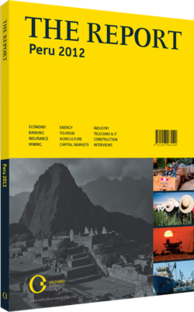OBG talks to Jorge Vilches, CEO, LAN

Interview: Jorge Vilches
Is location enough for Jorge Chávez Airport to become a west coast hub?
JORGE VILCHES: Certainly Lima has a strategic location, because it can connect any two major cities north and south of the equator, regardless of coast, from Vancouver and New York to Santiago and Buenos Aires. It is also at sea level, which eliminates the constraints for big aircraft seen in most high altitude airports in the Andean region. But location is not enough in itself.
Investment in infrastructure is required to meet customer demands and projected growth. The airport at Lima has four connecting timeframes that take the airport to maximum capacity, leaving no room for further growth, due to a lack of gates, jetways and a limited number of departures and arrivals on its one runway.
Are planned airport improvements adequate?
VILCHES: There are promising plans for six government-operated airports in the south as part of $50m in spending over the next two years. This will improve current conditions and permit further growth on domestic flights. Improved connectivity with Arequipa could be a boon to tourism and the economy. As for northern airports, Aeropuertos del Perú has already readied itself to handle aeroplanes of more than 60 tonnes. There is still much to be done on airports in the central highlands, which permit only small aircraft.
Of 86m internal travellers in 2011, all but 4m went by bus. What can be done to increase air travel?
VILCHES: Those figures are accurate and shocking. If you measure the average number of trips per person in Peru using air transport and compare those to the same rates of the region and the world, we had 0.13 trips per person per year until 2006, while in countries like Colombia and Chile it was double that figure. In the US the average is more than two flights per year, so there is a long way to go. In 2006 the cheapest average return flight started at $180. In 2007 we introduced a new pricing policy to stimulate demand through affordable prices, increasing the number of trips of those who already travelled, and, more importantly, creating an incentive for those who had never travelled by plane before. Since then, the number of new passengers per year jumped from 120,000 to 550,000, taking total air passengers from 2.7m in 2006 to 6m in 2011. Also, 72% of passengers in 2011 benefitted from prices compatible with those offered by buses. There is a long way to go but we are on the right path.
Where will we see international passenger growth?
VILCHES: The number of international passengers has grown at around 14% each year for the past five years, slightly slower than the domestic market yet reaching a similar size – around 6m. This is mainly because LAN and Taca established their main hubs in Lima. That additional capacity focused on moving passengers from Argentina, Brazil, Chile and Bolivia to Colombia, Venezuela, Ecuador, the Caribbean and the US, and vice-versa. There are still opportunities for growth, connecting more cities in these countries as well as on long-haul flights to the US and Europe.
Do Peruvian airlines need to consolidate to survive?
VILCHES: The domestic market is shared by four main carriers: LAN, Taca, Peruvian Airlines and Star Perú, plus a few smaller ones like LC Perú and Atsa, whereas almost every other market has two or three competitors. Talk about consolidation comes from two reasons. First, there is a clear need to reduce cost per available seat per km and achieve economies of scale. Due to the current market size and cost structures, there are no significant economies of scale to be achieved. Second is the low amount of revenue earned per seat. This causes reduced competition and high prices. What this market needs are high load factors (LF) through market stimulation with low fares. When carriers increase their LFs, economies of scale allow them to reduce unit costs. With lower costs, carriers can continue reducing fares and it becomes a virtuous growth cycle.
You have reached the limit of premium articles you can view for free.
Choose from the options below to purchase print or digital editions of our Reports. You can also purchase a website subscription giving you unlimited access to all of our Reports online for 12 months.
If you have already purchased this Report or have a website subscription, please login to continue.

